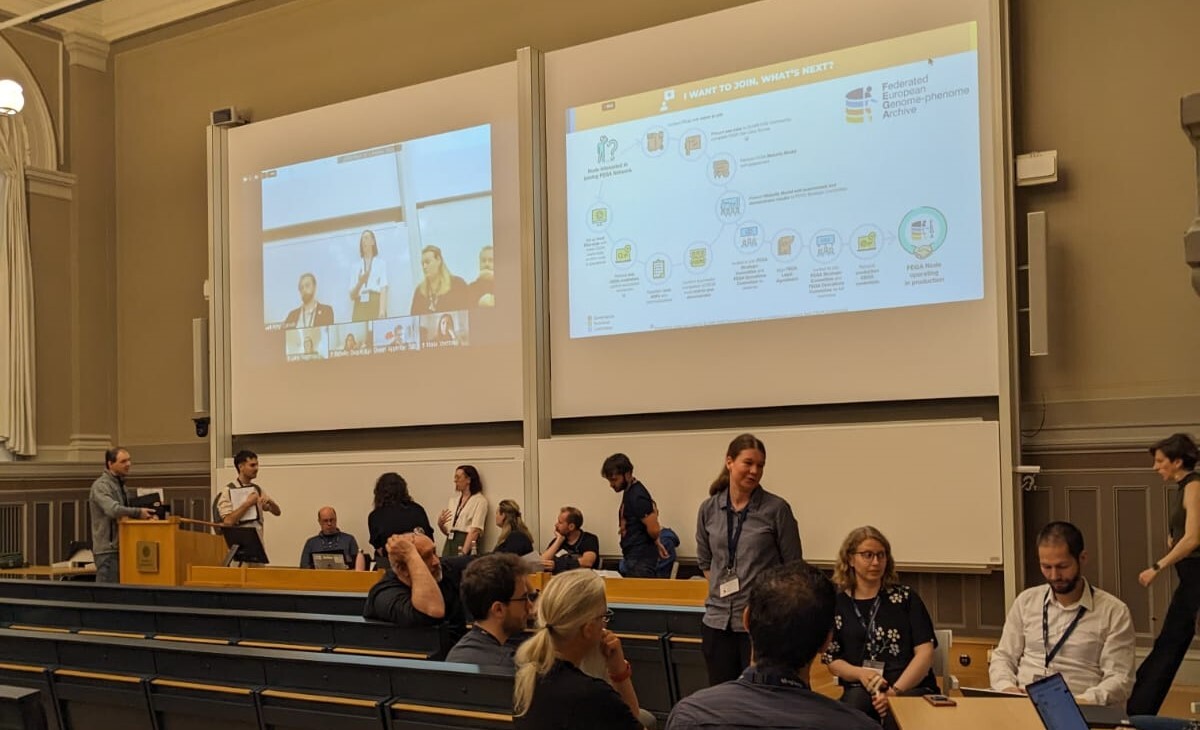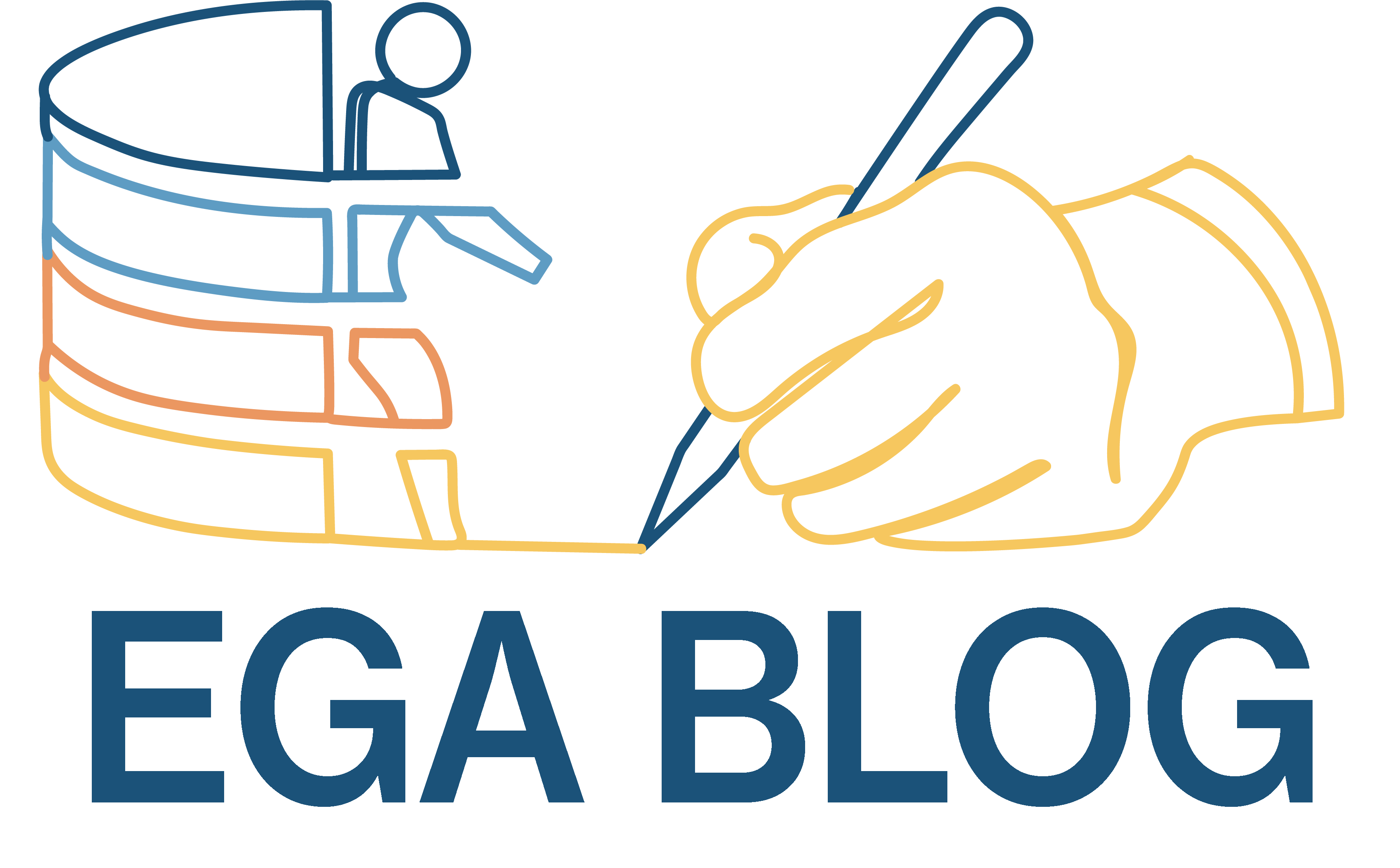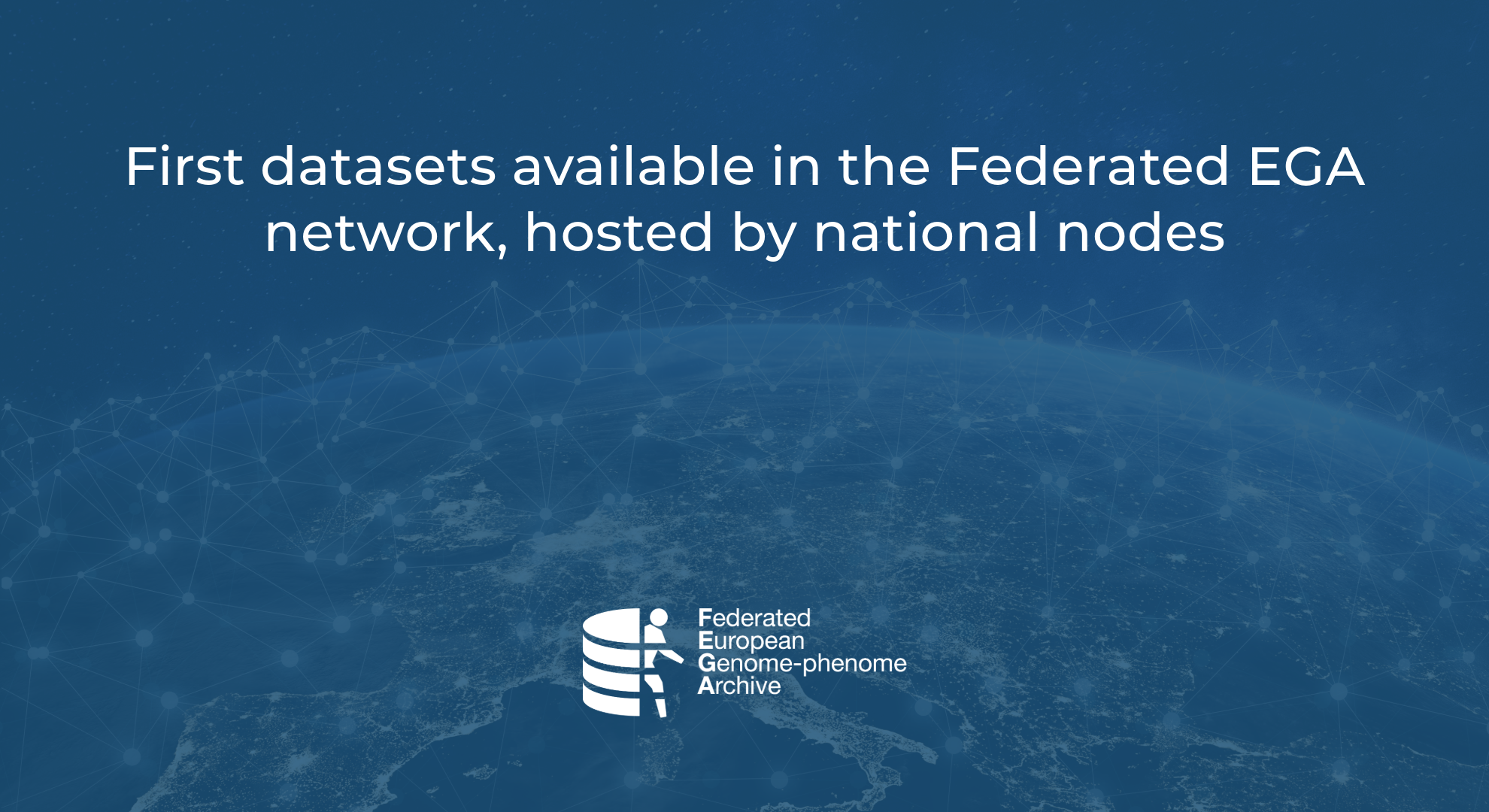The ELIXIR All Hands Meeting (AHM) was held in Uppsala, Sweden this June. We at EGA always look forward to this meeting as a chance to see many of our partners and colleagues face-to-face. The Federated EGA (FEGA) is one initiative that always benefits from the AHM, and this year FEGA was in the spotlight, with several questions related to the advances we've made recently. We held this year's FEGA workshop a little differently, with most time for discussions on various “hot topics”. Organised in different breakouts, over 2 rounds, participants could choose which session they wanted to attend.
One breakout was a general Q+A about FEGA and the path to join. We had a diverse range of participants, including experts from Central EGA (CEGA) and FEGA inaugural nodes, people from up and coming nodes at various stages of readiness, as well as participants not directly a part of FEGA but curious to learn more. It made for a great discussion!
In this blog post, we highlight some of the questions for those who didn’t have a chance to be there.
What is the FEGA Collaboration Agreement?
- It is a legal agreement between the node and Central EGA (CEGA) where both parties agree to certain responsibilities, like what services will be provided, sharing of public metadata with CEGA, interoperable technologies and more. The agreement is for 4 years, with the expectation of long-term sustainability.
- If a node is made up of multiple institutes, one institute must be the signatory. This could require a legal agreement within the node. CEGA is composed of CRG and EMBL-EBI (EGA itself has its own legal agreement between these institutes)
- Check the FEGA Collaboration Agreement
What about purely medical data? Is this accepted in FEGA?
- CEGA only accepts data approved for secondary research use. We do accept medical data collected in this context, as do some nodes.
- Nodes are able to accept any data they like, as long as it is sensitive, thus in need of controlled access.
What about other data types other than genomics? Like proteomics or images?
- They can be accepted, although CEGA is currently not designed with those formats in mind, so they might not fit with precision in the data model.
- The FEGA nodes are welcome to accept any data they want.
- Proteomic studies generating sensitive data are increasing, and specific work will likely be developed in the near future to adress this need.
Does CEGA require a certain amount or type of data to be shared by the node?
- No, we do not and it's up to each node to decide what specific data types they accept and in what format.
- Nonetheless, a FEGA node has the duty to be open to data submission from any institution of their country, and can't be limited by design to a single or limited data source.

Does CEGA and FEGA require a certain amount or type of details and description on the data to be submitted to the node?
- Data description (technical and biological), usually called metadata in this field, is crucial for the findability of the submitted data. Thus, we highly recommend including as much information as available to maximise the discoverability of the data. Specifical minimal metadata is defined in the submission schema, and thresholds are specified by the nodes. We are currently working towards a unified FEGA metadata model.
What are the geographical borders of FEGA?
- FEGA should make the E for Everyone, because any institute worldwide could join and we indeed do have countries and use-cases worldwide. Some of them are very close to officially joining the federation.
What are the main differences between FEGA and GDI?
- The two networks have a lot in common and also some critical differences. You can read all about this in one of our latest blog post.
If you have more questions, please consider having a look at the FEGA onboarding webpage and, of course, don't miss our workshop at the ELIXIR AHM next year!




